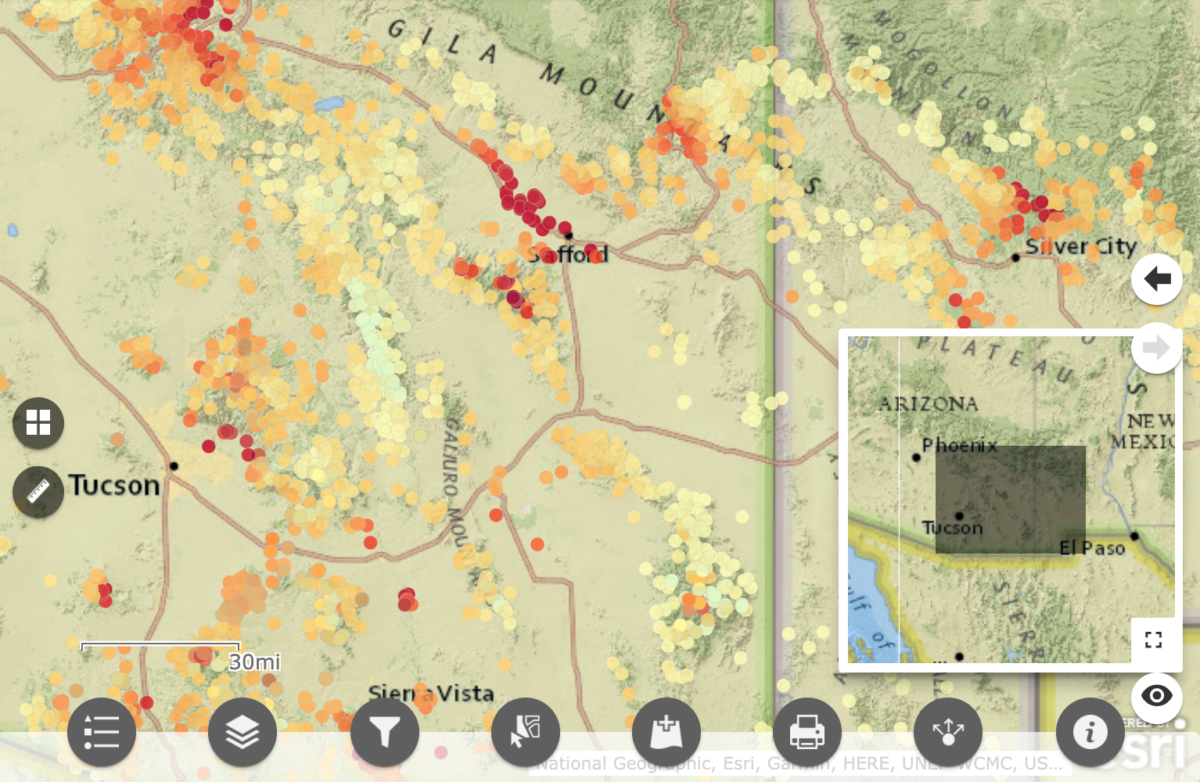Our Sky Island region is estimated to have 10,000 springs—places where groundwater comes to the surface and provide vital water for plants, wildlife, and people. That is a huge number of water sources to track and care for across Arizona and Sonora, but we’re up for the challenge! To help us understand which springs need our help most, we developed a Spring Prioritization Tool to compare the relative risk springs across the landscape face today. This approach allows us to understand across the Sky Islands where springs face severe threat from groundwater pumping, watershed erosion after fire, invasive species, lack of available drinking water for wildlife, or other threats, so we can plan stewardship treatments at high priority spring to enhance water flow and habitat.

The relative threat scores for all mapped springs in the region are shown here, with darker red dots indicating springs with higher relative threat from nearby roads, wells, urban areas, cropland, and burn risk. Springs with lower relative threat have lighter yellow dots.
Beginning with U.S. springs, our Prioritization Tool pulls together geographic, climatic, and ecological variables for each mapped spring. Conservation value and threat scores are calculated for each spring and the resulting relative scores are visible on our map explorer. Springs with on-the-ground survey data have many more variables available for this assessment and therefore additional survey-based scores, while springs that have not yet been mapped only have scores based on available spatial data for the region. You can toggle on and off different spring data layers on the map and see where emerging conservation need is greatest today.
All the data collected by our new Spring Seeker project will provide important new survey information to refine the relative spring value and threats in the Spring Prioritization Tool. These new data will make sure we keep our attention focused on the springs where we can have the greatest conservation impact on the ground. As more data comes in from Sonora, we will expand the Spring Prioritization Tool to Mexico so that we can compare spring condition binationally.
Visit our Spring Prioritization Tool to explore the score map or even download the database on spring health in U.S.
This project was funded by the Bureau of Reclamation and the Nina Mason Pulliam Charitable Trust.
